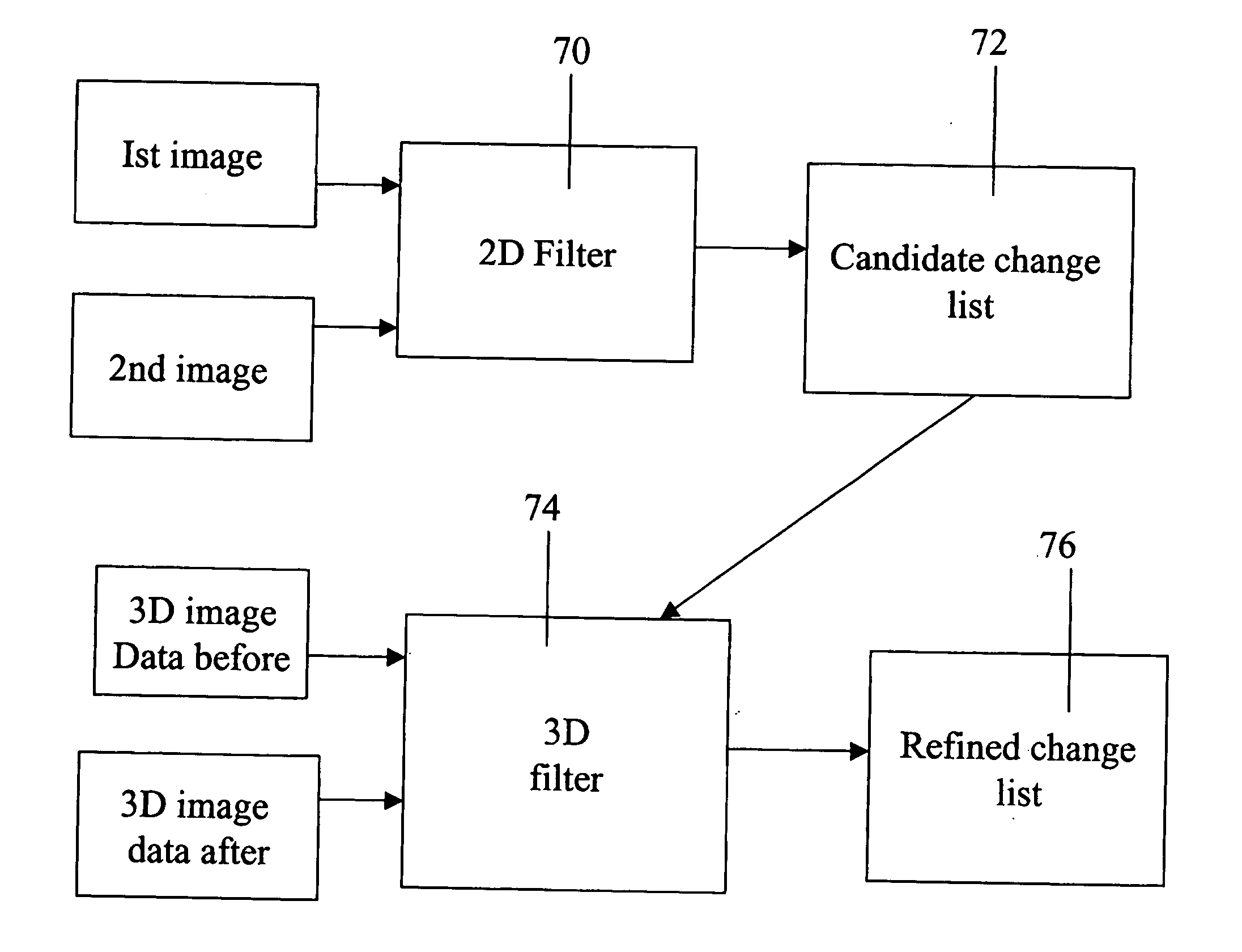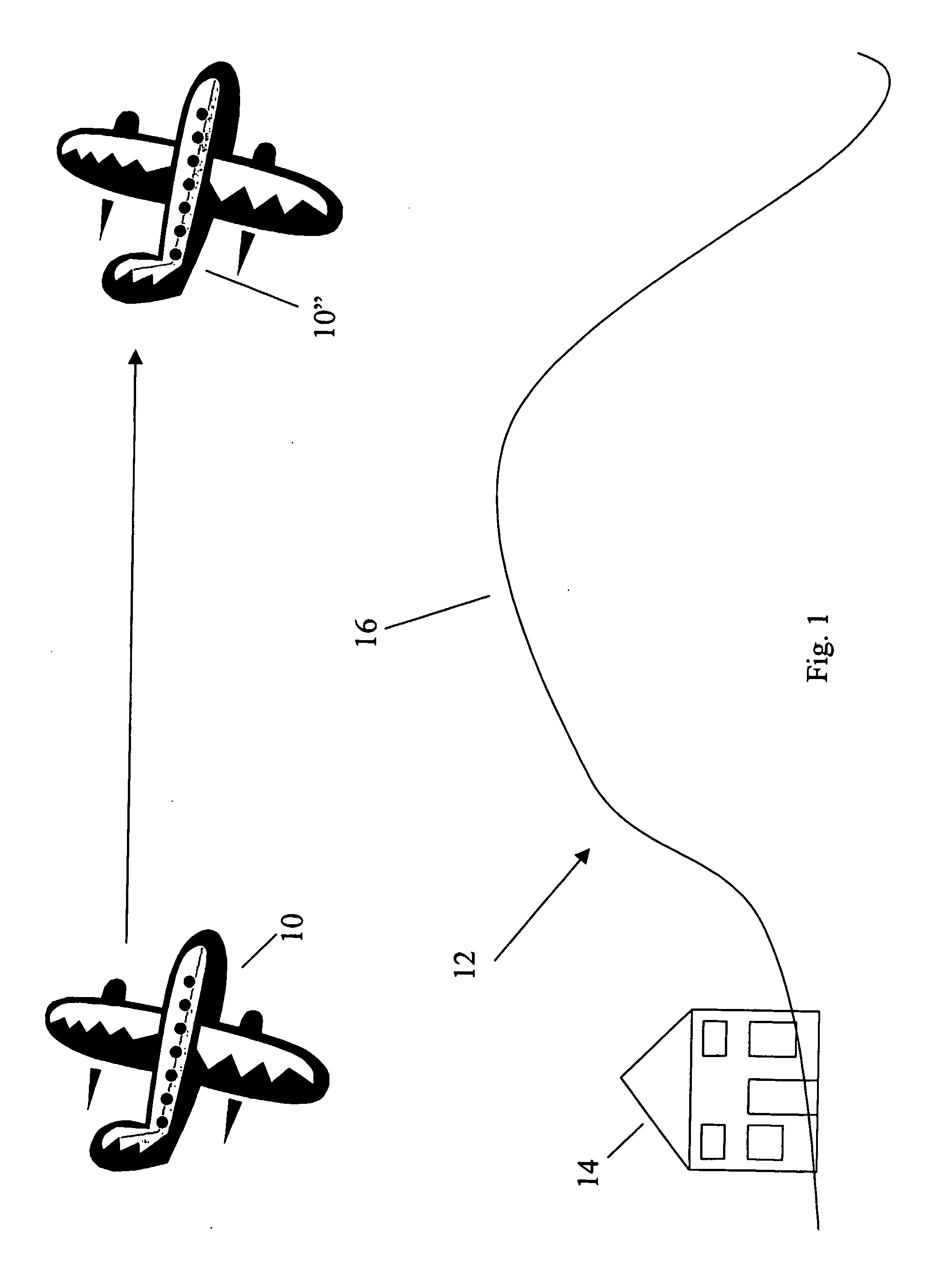Automatic processing of aerial images
a technology of automatic image processing and aerial images, applied in the field can solve the problems of unfavorable human analyst work, high difficulty in achieving the effect of automatic image processing, and inability to achieve uniform scal
- Summary
- Abstract
- Description
- Claims
- Application Information
AI Technical Summary
Benefits of technology
Problems solved by technology
Method used
Image
Examples
Embodiment Construction
[0122] The present embodiments comprise a system for utilizing three dimensional data in stereoscopic images to confirm or eliminate changes apparent from the two-dimensional data of the same images. The system comprises improved methods of registration of images both in two dimensions and in three dimensions, and improved methods of removing bias to enable a reliable three-dimensional comparison to be made. Furthermore the preferred embodiments use an ordered system of filtering for changes which has the consequence of restricting the more processor-intensive parts of the comparison process to change candidates already filtered by less processor-intensive stages.
[0123] The principles and operation of a change detection system according to the present invention may be better understood with reference to the drawings and accompanying description.
[0124] Before explaining at least one embodiment of the invention in detail, it is to be understood that the invention is not limited in i...
PUM
 Login to View More
Login to View More Abstract
Description
Claims
Application Information
 Login to View More
Login to View More - R&D
- Intellectual Property
- Life Sciences
- Materials
- Tech Scout
- Unparalleled Data Quality
- Higher Quality Content
- 60% Fewer Hallucinations
Browse by: Latest US Patents, China's latest patents, Technical Efficacy Thesaurus, Application Domain, Technology Topic, Popular Technical Reports.
© 2025 PatSnap. All rights reserved.Legal|Privacy policy|Modern Slavery Act Transparency Statement|Sitemap|About US| Contact US: help@patsnap.com



